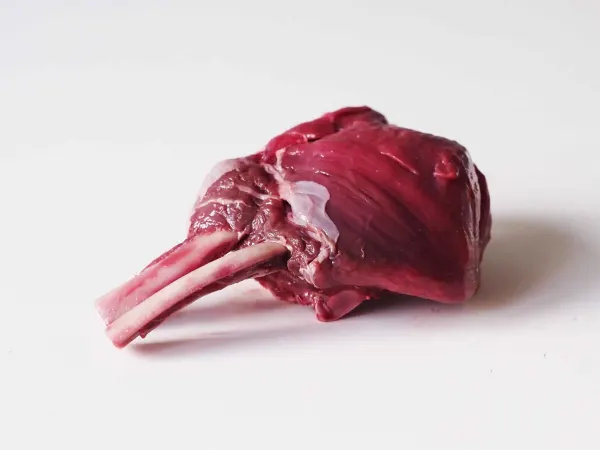Access our First Foods® Database in the Solid Starts App.
Learn moreVenison (Deer)
Meat
Age Suggestion
6 months
Iron-Rich
Yes
Common Allergen
No

When can babies eat venison?
Venison may be introduced as soon as your baby is ready to start solids, which is generally around 6 months of age. At this stage in their lives, babies (and especially breastfed babies) need lots of B-vitamins, iron, protein, and zinc on a regular basis. Venison is a terrific source of these essential nutrients.
How do you prepare venison for babies with baby-led weaning?
Every baby develops on their own timeline, and the suggestions on how to cut or prepare particular foods are generalizations for a broad audience.
6 to 8 months old:
Try mixing ground venison into an easy-to-scoop food such as mashed potatoes (making sure there are no big pieces of venison stuck together), or serve well-done strips of meat about the size of two adult fingers held together. Ironically at this age, the bigger and more resistive the food, the easier and safer it is for your baby to consume. Surprisingly your baby can consume a decent amount of nutrients just by sucking on the meat. If your baby is able to tear off pieces of the meat while munching, move on to ground patties.
8 to 12 months old:
Serve ground venison in the form of a patty alongside applesauce or yogurt, which will add moisture and aid swallowing. If a too-big piece of meat breaks off in your baby’s mouth, try not to intervene and instead coach your baby to spit out the meat by dramatically sticking out your own tongue and saying “blaah” repeatedly.
12 to 18 months old:
Continue with ground venison patties on top of applesauce, mayonnaise, or yogurt to aid swallowing, or try serving minced or shredded venison steak. You may also try serving cooked ground or minced venison on its own or mixed into a dish of grated cauliflower, lentils, or rice.
18 to 24 months old:
Continue serving ground venison patties or minced venison mixed into other food. At this stage, you may also try serving small, razor-thin pieces of venison steak on its own to encourage chewing practice. Slowly increase the thickness of the slices as your toddler develops stronger eating skills.
Venison is a lean meat, which means it cooks and dries out faster than fattier alternatives. Trap in the moisture by searing venison in a hot cast iron pan and letting the meat rest on a cutting board before slicing.
For more information on how to cut food for babies, visit our page on Food Sizes & Shapes.
Videos
Is venison a common choking hazard for babies?
Yes. Meat is a common choking hazard, and must be prepared in an age-appropriate way (check out our suggestions) for your baby.
For more information, visit our section on gagging and choking and familiarize yourself with common choking hazards.
Is venison a common allergen?
No. Venison is not a common food allergen, though in theory, one could be allergic to any food. When introducing a new food for the first time, serve a small quantity and watch closely as your baby eats to monitor for any signs of a reaction.
Is venison healthy for babies?
Absolutely. Precise nutritional value depends on the origin of the meat (commercially raised on a farm or hunted in the wild) but generally speaking, venison is an excellent alternative to beef. It’s leaner, it’s packed with amino acids, and it contains a higher amount of protein and micronutrients that your baby needs to thrive: vitamin B12 and other B-vitamins, copper, iron, selenium, and zinc. Just be sure to read the label as ground venison is often combined with fattier meats, such as pork.
Background and origins of venison
In hunting families, venison is synonymous with meat from a deer, though technically the word means any meat from the Cervidae family, which includes antelope and elk. These are game animals, meaning they are traditionally hunted in the wild, but today there are deer and elk farms that are raising domesticated breeds to market commercially.
Written and reviewed by these specialists
Expert Tips Delivered to Your Inbox
Sign up for weekly tips, recipes and more!
Copyright © 2025 • Solid Starts Inc


